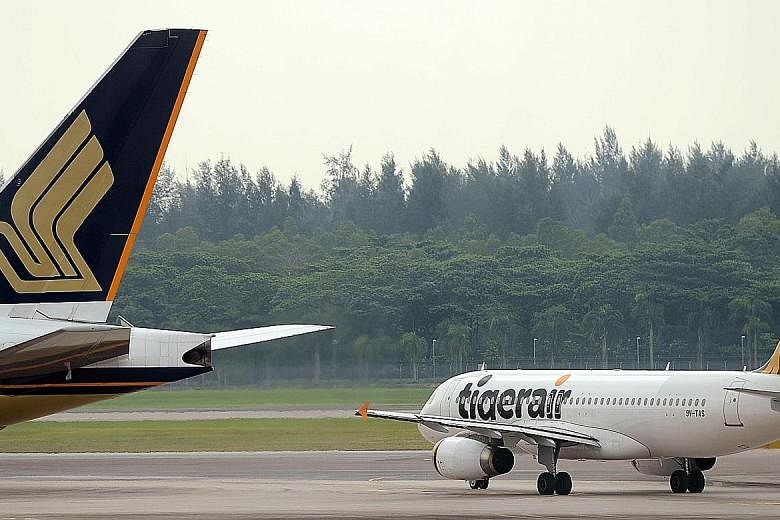Lower fuel costs and higher revenue helped budget carrier Tiger Airways turn its business around.
It posted a fourth-quarter net profit of $7.9 million, compared with a net loss of $18.8 million for the same period a year earlier.
For the full year, net profit was $282,000, against a net loss of $264.5 million a year earlier.
Group revenue rose 4.1 per cent in the fourth quarter to $179.3 million and 3.8 per cent to $702.9 million for the year ended March 31.
Earnings per share came in at 32 cents for the fourth quarter ended March 31, reversing a loss per share of 75 cents a year earlier.
The carrier's earnings were largely boosted by falling fuel prices, which helped the group record a 24.3 per cent fall in fuel costs. Although oil prices have firmed up recently, there is a supply glut keeping prices low.
-
AT AGLANCE
-
Q4 NET PROFIT:
$7.9 million, reversing from a net loss of $18.8 million
Q4 REVENUE:
$179.3 million (+4.1%)
However, the benefit of lower fuel costs was partially eroded by higher aircraft maintenance costs, higher aircraft rentals as well as the impact of the appreciation of the US dollar against the Singapore currency.
Maintenance, material and repair expenses rose 52.3 per cent in the fourth quarter to hit S$33.2 million, up $11.4 million.
-
UPLIFTING
-
The board is heartened by these results which indicate that the turnaround of Tigerair is largely achieved. We look forward to the full integration into the Singapore Airlines Group.
TIGERAIR, in a statement.
The company said this was mainly due to the ageing of the fleet and the appreciation of the US dollar against the Singdollar.
Tigerair posted better revenues off an improvement in yields and load factors, which refers to the average number of seats filled per aircraft.
The turnaround came after it became a wholly-owned subsidiary of Singapore Airlines.
"The board is heartened by these results which indicate that the turnaround of Tigerair is largely achieved," the company said in a statement.
"We look forward to the full integration into the Singapore Airlines Group."
The budget carrier had launched its initial public offering in January 2010. Priced at $1.50 a share, investors had flocked to it, even as it accumulated losses of $127 million at the time of listing.
Last November, SIA launched a takeover bid for the budget carrier after its loss-making ventures abroad. While the takeover attempt met with some resistance from Tiger's minority shareholders, SIA raised its offer price from 41 cents to 45 cents and eventually managed to acquire and delist the company.
In a statement in March, SIA chief executive Goh Choon Pheng said: "With full ownership of Tiger Airways, we will be able to fully integrate it within the SIA Group, strengthening Tiger Airways' future growth prospects."


